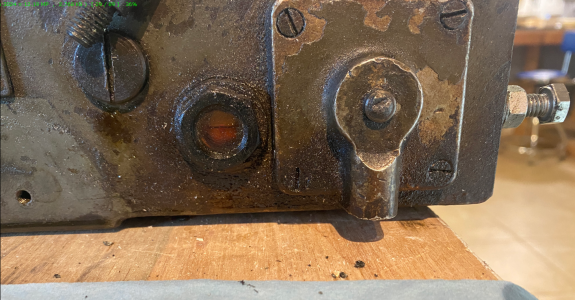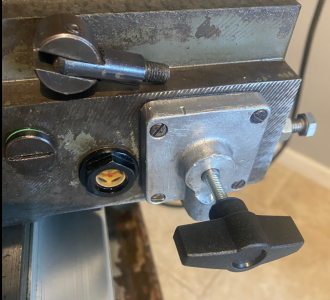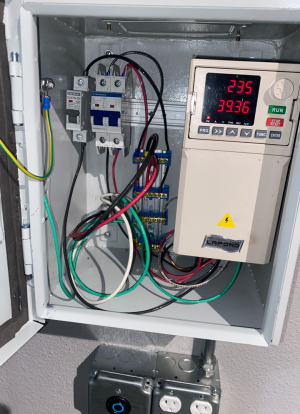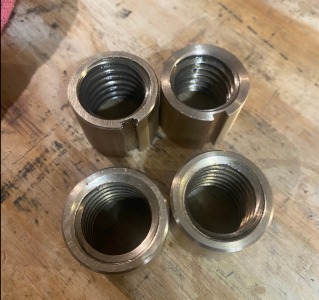I've been busy with the mill but appreciate all the comments and discussion. Here is a summary - I may start separate threads on some of these items because a) they are specific and b) I wish I would have found more info on them when I was looking.
1. I fixed the way-oil pump and (partially) re-plumed the oil distribution. I dissasembled the pump and got the piston out (which had been broken off flush with housing), and drilled and tapped it for M6-1.00 thread, and attached a handle using that. I also installed a new oil-cup for the quil feed (was missing - broken off). All this makes me wonder and worry a bit about the lubrication of this tool in recent past.
2. I discovered that the x-axis (longitudinal axis) lead-screw nuts were really shot. The lead-screw itself is worn, but not horribly - I can live with it. Lagun wanted $1700 for a new screw/nut and $700 for just the nut. FWIW - my (old) model has a split nut, but they now use a single nut. I made my own for $200 using some bronze lead-screw nuts from McMaster Car. Actually still in process - turned to OD and length, but I need to re-assemble the mill with old nuts in order to mill the keyway groove in new nuts, then pull leadscrew/nuts back out and put in new nuts. (I don't have a broaching tool for my lathe).
3. I purchased a Lapond K-100 series VFD (Amazon) rated for 2HP/1.5KW, and installed it in an enclosure. It works. I've limited frequency range to 50Hz-70Hz in consideration of the age of the motor and just to be safe. Gives a nice range of RPM's for a given pully step - time will tell how useful that is.
And a LOT of cleanup! Mostly cosmetic, but it looks much better and makes me happy. Here are some photos:
Way-oil pump flange with just a nib of shaft extending where handle was broken off.
View attachment 480675
After cleanup and new handle. Works fine - I will shorten the stud on the handle and probably leave it off unless I want to pump some oil - I suspect it was broken off for a reason (is in the way).
View attachment 480676
The Lapond VFD in it's enclosure. I pulled 10-3 wire from a new 30A 240V breaker in my main panel. The "-3" means I have the otherwise not-needed neutral, so I could pull off a 20A 120V circuit from either leg of the 240V, which I separately fused (breaker) in the enclosure and ran that to a 2-gang box with four 120V outlets. I'll use this for the DRO, x-axis feed, lamp, bench grinder, etc. I was short 120V circuits in the shop. Motor draws less than 7 Amps so I can share 20A on either leg for two 20A 120V circuit (used other leg for a 120V line to an air compressor in the garage). The VFD works fine and I am mindful of all the cautionary comments. The manual sucks - I was an EE before I was a Physicist, and have worked with control systems much of my career, and it still was hard to decipher. Lots of information, but so poorly translated. But simple in the end.
View attachment 480677
Old and new leadscrew nuts. Was a bit of a trick to turn these down to diameter - I will create a separate thread on this because I think it could be useful for others. As you can see, the new nuts do not yet have the keyway slot. I thought quite a bit about how to do this, and easy answer is "If I only had a mill." I will re-assemble the mill with old nuts, cut the keyways and then take out the leadscrew again to put new nuts on. After you've done this once, it really isn't that hard.
View attachment 480681





